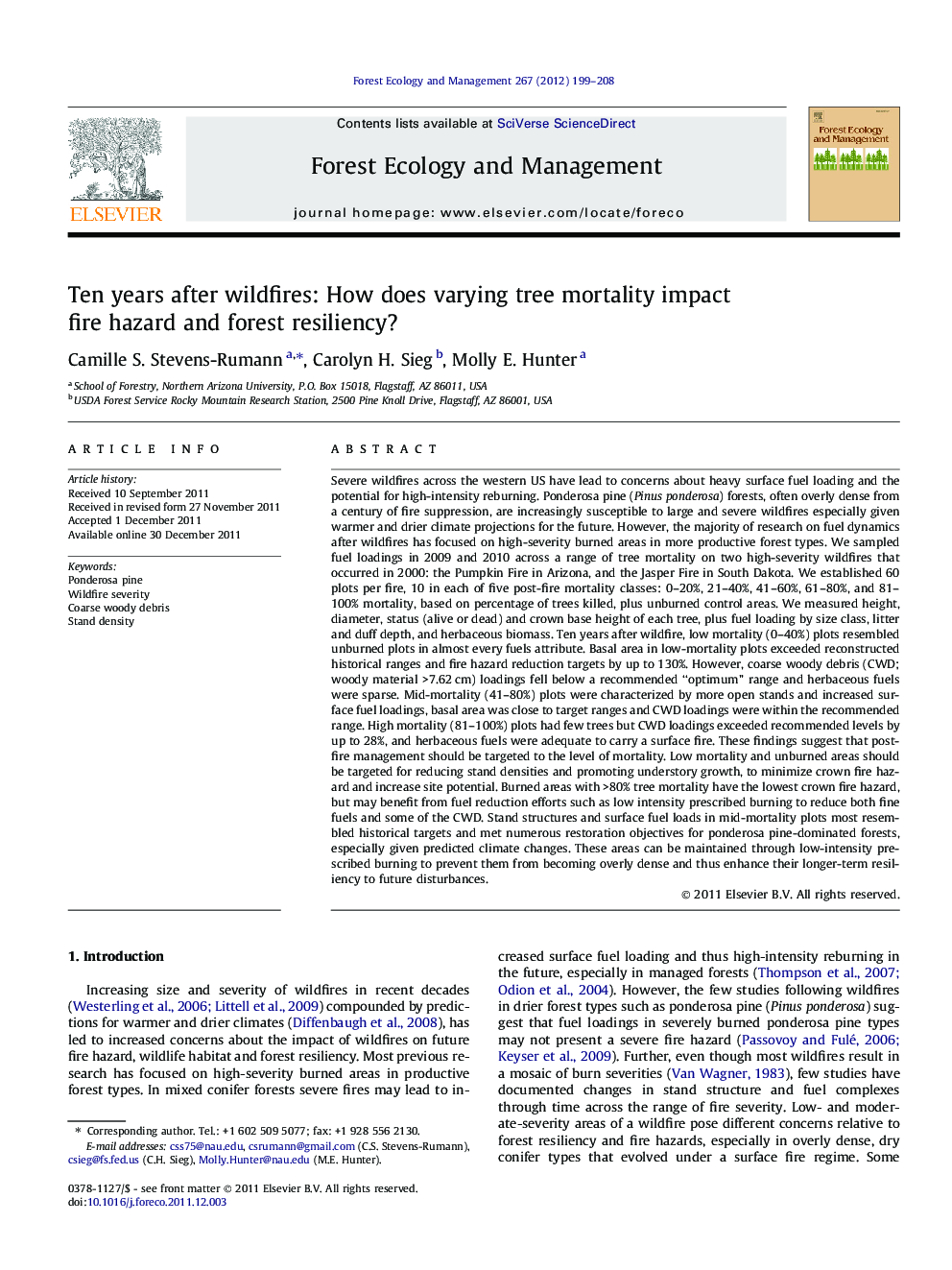| کد مقاله | کد نشریه | سال انتشار | مقاله انگلیسی | نسخه تمام متن |
|---|---|---|---|---|
| 87625 | 159258 | 2012 | 10 صفحه PDF | دانلود رایگان |

Severe wildfires across the western US have lead to concerns about heavy surface fuel loading and the potential for high-intensity reburning. Ponderosa pine (Pinus ponderosa) forests, often overly dense from a century of fire suppression, are increasingly susceptible to large and severe wildfires especially given warmer and drier climate projections for the future. However, the majority of research on fuel dynamics after wildfires has focused on high-severity burned areas in more productive forest types. We sampled fuel loadings in 2009 and 2010 across a range of tree mortality on two high-severity wildfires that occurred in 2000: the Pumpkin Fire in Arizona, and the Jasper Fire in South Dakota. We established 60 plots per fire, 10 in each of five post-fire mortality classes: 0–20%, 21–40%, 41–60%, 61–80%, and 81–100% mortality, based on percentage of trees killed, plus unburned control areas. We measured height, diameter, status (alive or dead) and crown base height of each tree, plus fuel loading by size class, litter and duff depth, and herbaceous biomass. Ten years after wildfire, low mortality (0–40%) plots resembled unburned plots in almost every fuels attribute. Basal area in low-mortality plots exceeded reconstructed historical ranges and fire hazard reduction targets by up to 130%. However, coarse woody debris (CWD; woody material >7.62 cm) loadings fell below a recommended “optimum” range and herbaceous fuels were sparse. Mid-mortality (41–80%) plots were characterized by more open stands and increased surface fuel loadings, basal area was close to target ranges and CWD loadings were within the recommended range. High mortality (81–100%) plots had few trees but CWD loadings exceeded recommended levels by up to 28%, and herbaceous fuels were adequate to carry a surface fire. These findings suggest that post-fire management should be targeted to the level of mortality. Low mortality and unburned areas should be targeted for reducing stand densities and promoting understory growth, to minimize crown fire hazard and increase site potential. Burned areas with >80% tree mortality have the lowest crown fire hazard, but may benefit from fuel reduction efforts such as low intensity prescribed burning to reduce both fine fuels and some of the CWD. Stand structures and surface fuel loads in mid-mortality plots most resembled historical targets and met numerous restoration objectives for ponderosa pine-dominated forests, especially given predicted climate changes. These areas can be maintained through low-intensity prescribed burning to prevent them from becoming overly dense and thus enhance their longer-term resiliency to future disturbances.
► We sampled fuels across a range of mortality 10 years after two dry conifer wildfires.
► Basal area in low mortality and unburned areas exceed recommended targets by up to 130%.
► Low mortality and unburned areas are the least resilient to future disturbances.
► Coarse woody debris was 28% above recommended levels in high mortality areas.
► Mid-mortality plots are likely the most resilient to future disturbances.
Journal: Forest Ecology and Management - Volume 267, 1 March 2012, Pages 199–208